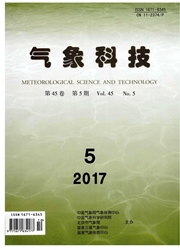

 中文摘要:
中文摘要:
利用逐小时地面加密观测资料、系留气球探空资料、常规观测资料、NCEP再分析资料等对2004年11月30日至12月1日发生在北京的一次浓雾过程进行了分析。结果表明:浓雾过程发生在边界层有浅槽东移,地面为均压场、微风、入夜后迅速辐射降温的条件下;浓雾生成前、后近地层维持辐合区,有利于水汽的聚集;在浓雾发生发展的不同阶段,边界层中逆温层、湿度和风的分布是有差别的;从动力学的角度对温、湿场结构的形成原因进行了初步探讨,指出了与其它辐射雾的不同点。
 英文摘要:
英文摘要:
The data of hourly surface intensive observation, captive balloon sounding, surface and radiosonde observation and NCEP are used to study the boundary layer structure and its formation causes of a fog event on 30 November and 1 December 2004 over Beijing. The results show that during the fog event, there was a trough crossing Beijing in the atmospheric boundary layer, weak wind and air cooling by radiation near the surface at night. There is a convergence area to pool the moisture air in the atmospheric boundary layer. The different structures of temperature, moisture and wind are revealed during the formation and growth of the fog in the atmospheric boundary layer. The formation causes of temperature and moisture features are revealed by dynamic diagnosis. The differences from the typical fogs are also discussed.
 同期刊论文项目
同期刊论文项目
 同项目期刊论文
同项目期刊论文
 期刊信息
期刊信息
